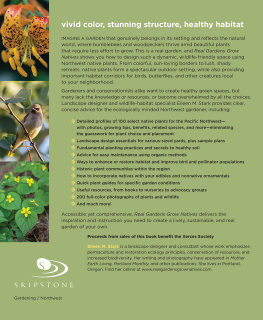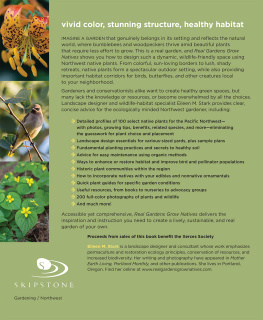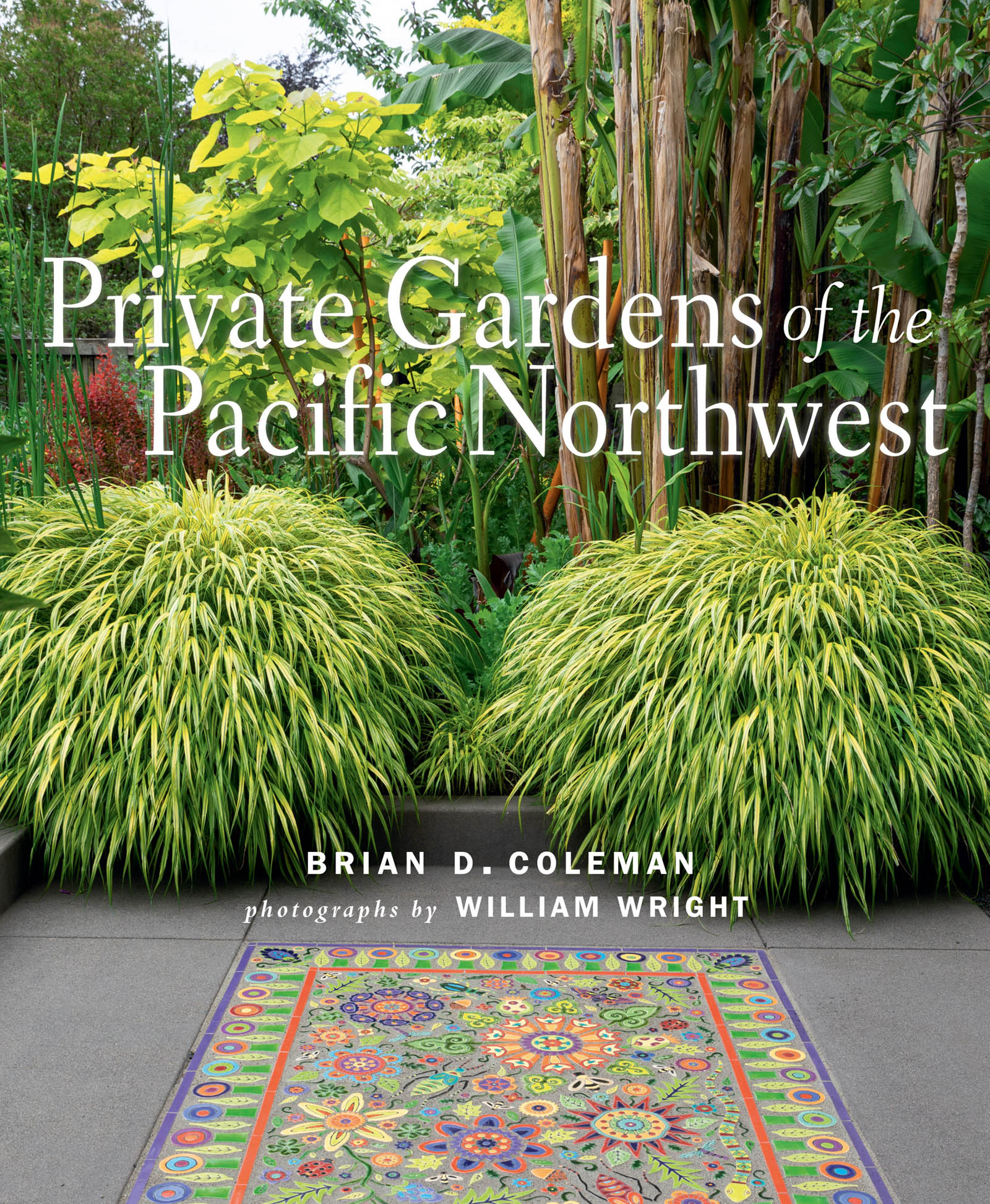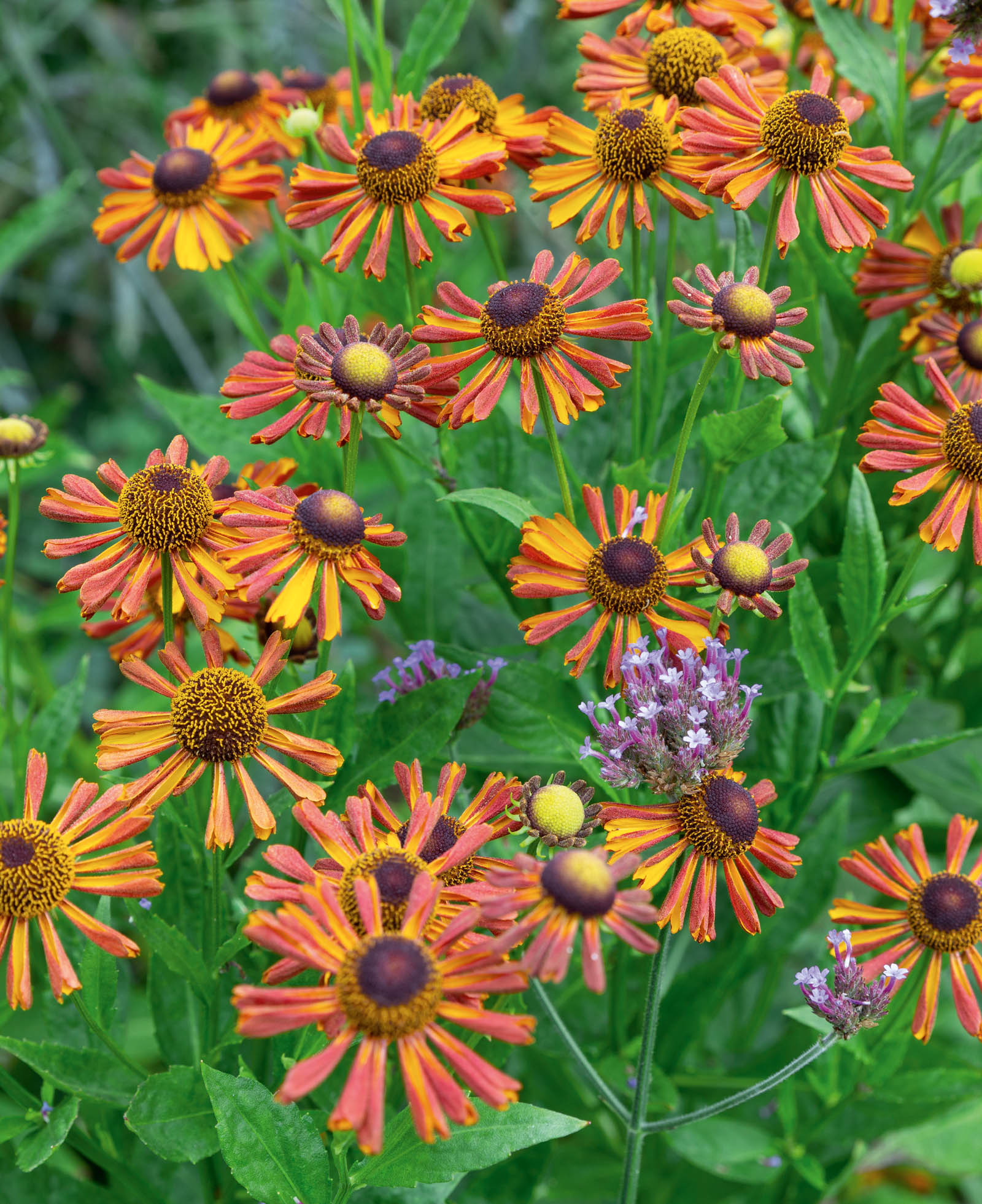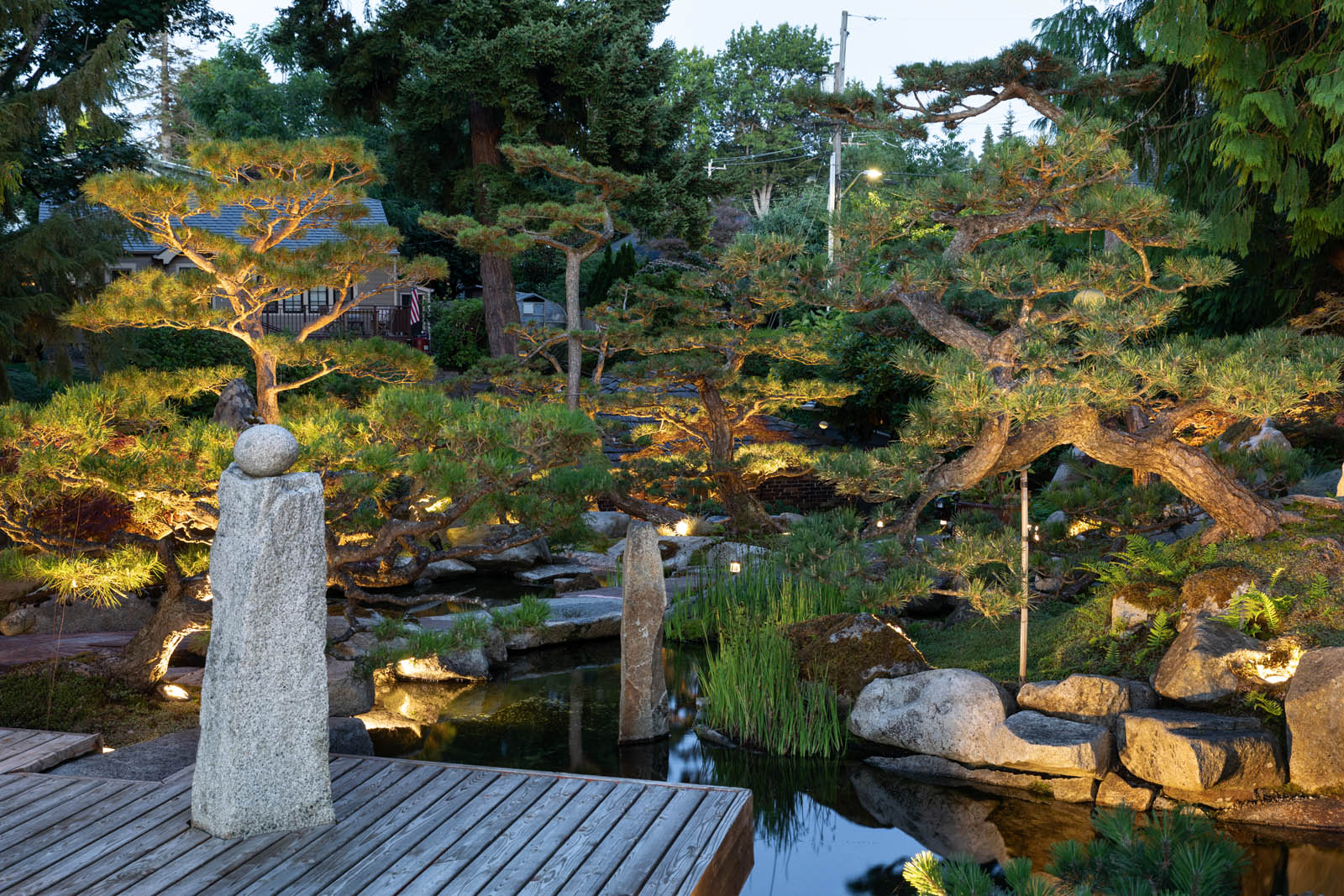Private Gardens of the
Pacific Northwest
brian d. coleman
photographsby william wright
Digital Edition 1.0
Text 2021 Brian Coleman
Photography 2021 WilliamWright, except a noted otherwise.
All rights reserved. No part of this book may be reproduced by any meanswhatsoever without written permission from the publisher, except brief portionsquoted for purpose of review.
Published by
Gibbs Smith
P.O. Box 667
Layton, Utah 84041
1.800.835.4993 orders
www.gibbs-smith.com
Library of Congress Control Number: 2021930715
ISBN 9781423654988 (ebook)
Contents
Foreword
by Art Wolfe
In 1986 I moved into this old house in West Seattle. Two years prior tothat, in 1984, I was the expedition photographer on the first Western expeditionallowed into Tibet and up the northeast ridge of Mount Everest. En route to China,we stopped in Japan for a few days and I really enjoyed walking around the gardens.Returning from Everest we stopped in Huanshan, which is a sacred mountain in easternChina renowned for its granite spires and wind-twisted pines that grow in therarified air. Both locations, the Japanese gardens and Huanshan, inspired me totransform the grass yard of my old house into a Japanese-style garden infused withthe wildness of Huanshan.
Over the years I have poured heart and soul into the garden. As time haspassed the garden has only improved as moss has grown across rocks, and the treeshave taken on elegant shapes through perfect placement and judicious pruning.
Working with architect Wayne Fricke, who was also remodeling andupdating parts of the house, we dug out the main upper pond with a backhoe andcreated a streambed that meandered downhill through the yard to a holding pond nearthe garage and driveway. We installed a recirculation pump to feed the water back upto the top pond.
After setting the pond and streambed we cemented over all areas to makesure the water would stay where we wanted it. It was no easy task as there was amyriad of different angles and pitches to navigate; water will always find a wayout.
In 1986 I moved into this old house in West Seattle. Two years prior tothat, in 1984, I was the expedition photographer on the first Western expeditionallowed into Tibet and up the northeast ridge of Mount Everest. En route to China,we stopped in Japan for a few days and I really enjoyed walking around the gardens.Returning from Everest we stopped in Huanshan, which is a sacred mountain in easternChina renowned for its granite spires and wind-twisted pines that grow in therarified air. Both locations, the Japanese gardens and Huanshan, inspired me totransform the grass yard of my old house into a Japanese-style garden infused withthe wildness of Huanshan.
Over the years I have poured heart and soul into the garden. As time haspassed the garden has only improved as moss has grown across rocks, and the treeshave taken on elegant shapes through perfect placement and judicious pruning.
Working with architect Wayne Fricke, who was also remodeling andupdating parts of the house, we dug out the main upper pond with a backhoe andcreated a streambed that meandered downhill through the yard to a holding pond nearthe garage and driveway. We installed a recirculation pump to feed the water back upto the top pond.
After setting the pond and streambed we cemented over all areas to makesure the water would stay where we wanted it. It was no easy task as there was amyriad of different angles and pitches to navigate; water will always find a wayout.
I worked with Marenakos Rock Center to find suitable mossy rocks, and Iwould estimate that I brought in about 100 tons of rocks to the garden over theyears, much of it placed by Sellen Construction with their mobile crane. I had BigTrees of Snohomish place larger trees, including several 2,500-pound rootballs ofboth rhododendron and Japanese maples. In the further reaches of the yard, Sellenscrane had to be used.
The pond and stream with small waterfalls started as a vision and becamea reality. Every year I look forward to spending time with my assistant, friend, andcolleague Gavriel Jecan candling and pruning the twenty-five black pines, which putout at least 10,000 candles. Most pines want to be big trees, and the role of thepruner and guider is to keep the tree healthy but contorted and small within theconfines of the garden. I try to keep the garden in a natural state, and to that endI have brought in licorice, maidenhair, sword fern, and native mosses. The garden isvery much a microcosm of the Cascades and Olympics.
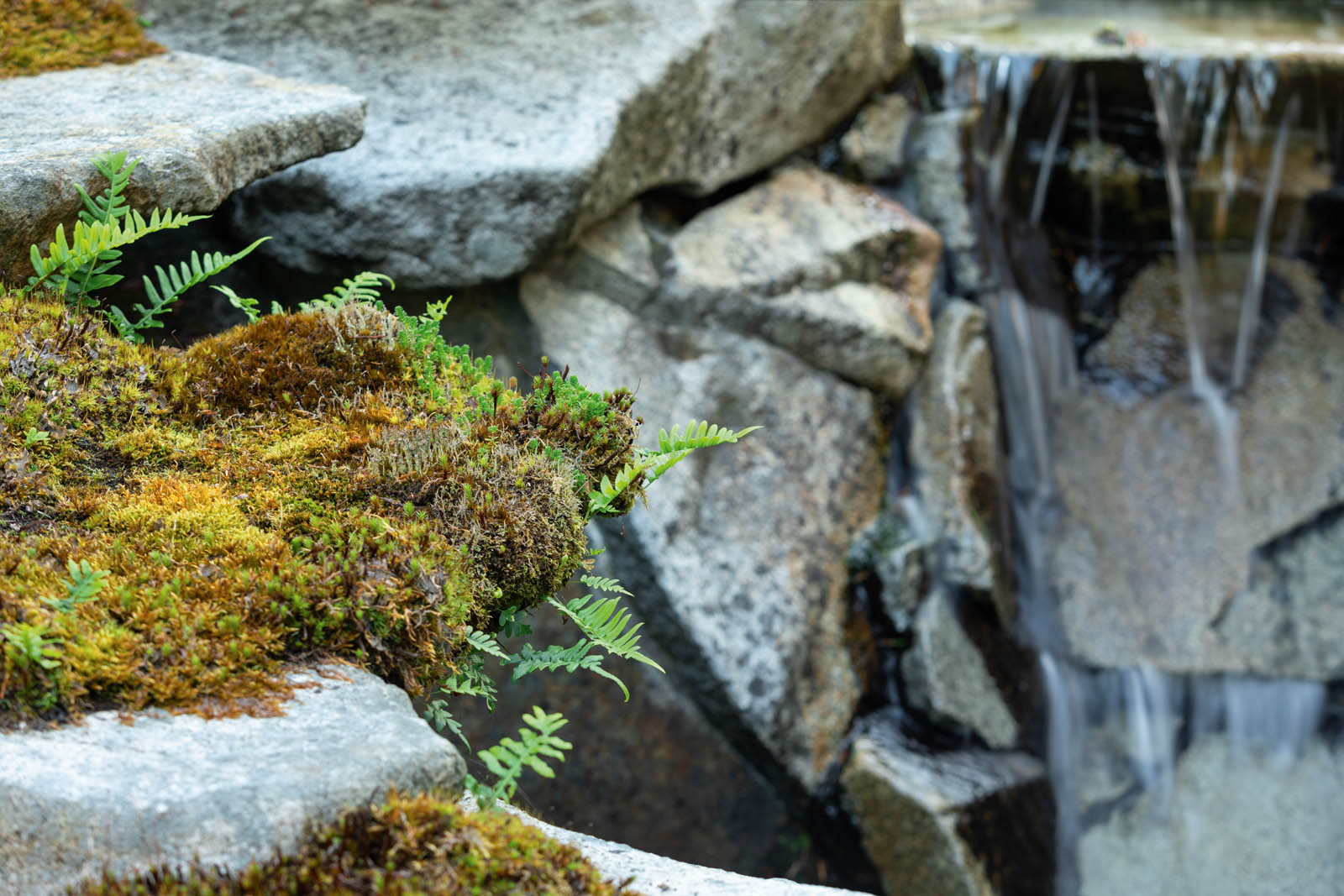
The garden itself is rimmed by giant cedar trees that in late autumn putout a lot of needles that fall and cover the delicate mosses. This is a very busytime of year for me as I clear the acid-laden cedar droppings that would surelydamage the mosses. Year-round care of the garden is necessary but I love working init. Every time I return from an international trip I bury myself for a day or two orthree in the garden. Not only is it a labor of love, but I also see it as aphysiological and psychologically therapeutic way of decompressing from a long tripwhere airport lines and customs agents are the rule of the day.
Another thing that makes this garden great are my neighbors to thesouth. They have a beautiful garden as well, and in several places I can lookthrough the trees into their garden. It almost seems like an extension of myproperty. There is a certain communal pride we take in our yards.
To the west are Puget Sound and the Olympic Mountains, so my gardenfeels open and spacious. To the north is a wooded ravine. From there come many birdspecies that are attracted to the flow of water year-round. The water becomes asource for mammals such as raccoons, opossums, rabbits, and even a rare fox andurban coyote. Sharp-shinned hawks, barred owls, and screech owls come to the streamto bathe and drink. Its a wonderful location here in West Seattle. Its a touch ofthe Northwest that feels like the San Juans, and for me its a joy every time I lookout from the old historic house. Every view from the house settles on nature. It isa perfect place to live.
Nobody does this kind of landscaping without having a love to do it. Ithas been an amazing amount of work over the years, and now I am at the point wherevery little needs to be done except maintenance. Ive added koi to the pond, and asthey grow, the garden is made complete.
Introduction
When Gibbs Smith approached me to write this book on private PacificNorthwest gardens, I was delightedhere was a special opportunity to visit anddocument some of the Northwests most beautiful gardens. Talented Seattlephotographer William Wright and I traveled up and down the West Coast, from theKitsap Peninsula where we photographed a magical garden set high on a bluffoverlooking Puget Sound to a haven of hydrangeas nestled amongst giant fir. Wetraveled down Bainbridge Island to capture a 1915 bungalows charming beds ofperennial color and took a ferry to Vashon Island, a sanctuary for gardening. Wewere able to photograph some very special gardens, including an exotic stumperyhidden deep in the forest and an expansive 17-acre retreat of topiary and coloroutlined by boxwood parterres that the owner, a retired school teacher, has lovinglytended for the past several decades. We were invited to famed photographer ArtWolfes Japanese garden in West Seattle, and Art was kind enough to write theforeword for our book as well.








